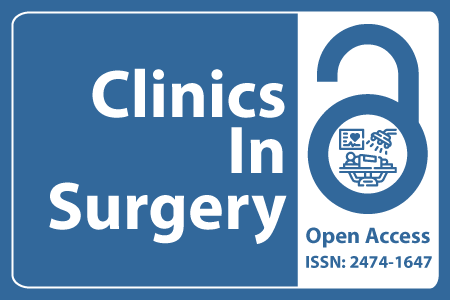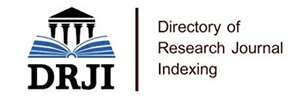
Journal Basic Info
- Impact Factor: 1.995**
- H-Index: 8
- ISSN: 2474-1647
- DOI: 10.25107/2474-1647
Major Scope
- Colon and Rectal Surgery
- Vascular Surgery
- Neurological Surgery
- Bariatric Surgery
- Otolaryngology - Head and Neck Surgery
- Robotic Surgery
- Emergency Surgery
- Breast Surgery
Abstract
Citation: Clin Surg. 2020;5(1):2707.Research Article | Open Access
Epidemiological Profile and Predictors of Outcome in Trauma Victims: Electronic Data Analysis of a Teaching Hospital in São Paulo
Isaac José Felippe Corrêa Neto1,3*, Jamil Ribeiro Cade2,3, Amanda Gambi Robles3, Carolina Ornelas3 and Laercio Robles1
1Department of Surgery, Santa Marcelina Medical School, Brazil
2Department of Cardiology, Santa Marcelina Medical School, Brazil
3Santa Marcelina Medical School, TeleTrauma® Team, Brazil
*Correspondance to: Isaac José Felippe Corrêa Neto
PDF Full Text DOI: 10.25107/2474-1647.2707
Abstract
Introduction: Overall, trauma is the third leading cause of mortality in Brazil accounting for 13.3% of all causes of death and it is the main cause of mortality in the first half of life. Besides the preventive measures necessary to try to change this scenario, the creation of integrated trauma centers and a systematization of care, with or without the help of technology, are promising in the treatment of victims of polytrauma. Objective: Demonstrate a survey of trauma cases treated at a teaching hospital in the city of São Paulo and correlate factors with predictors of hospitalization and mortality. Methodology: Analysis of trauma patients admitted to Santa Marcelina Hospital in Itaquera, São Paulo, from March to October 2018. Data on the occurrence of trauma by age and sex, affected body part, origin of patients, means to reach the university hospital, accommodation, mortality and length of hospitalization were collected. Results: A total of 1,315 patients, victims of trauma, were admitted to Santa Marcelina Hospital in Itaquera, São Paulo, 69.2% male and 13.2% over 65-years old. Most had access to such hospital due to primary health care. The analysis of the predictors of mortality in this survey were -age over 65-years (p<0.001), need for ICU accommodation (p<0.001), admission to the hospital through rescue units (SAMU or COBOM) (p<0.001) and traumatic brain injury (p<0.001). Conclusion: Elderly people with traumatic brain injury and need for ICU accommodation correlate with higher mortality rates and length of hospitalization.
Keywords
Polytrauma; Treatment in specialized care center; Telemedicine; Predictors of outcome
Cite the article
Felippe Correa Neto IJF, Cade JR, Robles AG, Ornelas C, Robles L. Epidemiological Pro ile and Predictors of Outcome in Trauma Victims: Electronic Data Analysis of a Teaching Hospital in São Paulo. Clin Surg. 2020; 5: 2707.













